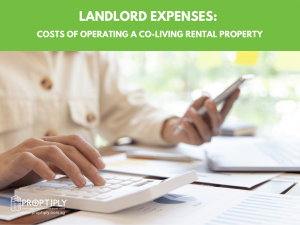
Renting out a condo unit as a co-living space can be seen as a property investment strategy that can help you earn passive income.
One way of doing this is through the rent-to-rent model. This is where you rent an apartment and then sublet out the individual rooms to individual tenants.
But before you become a landlord, you have to first tabulate your expenses and make sure that the potential rental income you can earn can cover the expenses involved in operating the co-living unit with balance leftover for you to have positive cash flow.
Here are some of the expenses or costs you need to consider under a rent-to-rent model.
Upfront or one-off costs
Upfront or one-off costs are those incurred before you rent out the unit. These are essential to prepare the unit for rent.
1. Security deposit
When you sign a lease to rent a unit from another landlord, you have to pay a security deposit upfront. A common practice is to pay one month’s deposit for each year of lease. For example, if you sign a 3-year lease, you would have to hand over a security deposit worth 3 months of rent. The landlord can make deductions from the security deposit during the tenancy period to for repairs or damages during that time. This security deposit is refundable. Any balance will be returned to you at the end of the lease if you choose not to renew it.
2. Staging costs and furnishings
If you are marketing your unit to tenants as a co-living space, you have to prepare the unit for rent so that it’s liveable. This means you would have to get basic furniture such as the bed, study table, dining table, kitchen utensils, and electrical appliances such as the washing machine, dryer and refrigerator. You’d also have to make sure any repairs are done before renting out tehe unit. If you are opening up the unit for viewing, it’s a good idea to do some staging so that the unit looks appealing. This may include giving the unit a good coat of paint and putting up some decorative items.
3. Marketing costs and agent commissions
To secure your tenants, you have to do some marketing. This could involve listing your rental unit or running social media ads. If you engage a property agent, you may have to pay a commission if the agent is successful in getting tenants for you.
Monthly expenses
Monthly expenses are the fixed expenses or recurring costs you have to pay each month to operate the unit.
4. Base rent
This is the monthly rent you need to pay to your landlord for renting the property. You must ensure that the total amount of rental income covers your base rent and other monthly expenses.
5. Utilities
One of the appeals of co-living from a tenant’s perspective is that utilities (electricity, water and gas) is included in the rent. So you have to account for utilities when you set the asking rental to tenants.
6. Wifi
These days, almost everyone cannot do without the internet. Offering wifi as an amenity is definitely a must for co-living spaces. This also saves your tenants the hassle of setting up those services themselves. Again, make sure your rental income can cover the cost of wifi.
7. Housekeeping services
Weekly housekeeping services will not only keep your tenants happy but will make sure that your apartment remains clean. But this is also a cost you have to factor in when you set your asking rental.
Ad-hoc or regular maintenance
Maintenance costs can be ad-hoc or regular (say, quarterly). These are needed to ensure the property well-maintained. Depending on how the Tenancy Agreement is structured, the costs of these can either be borne by you (the landlord to your tenant) or shared with your tenant or some other agreement.
8. Pest control services
Sometimes pest infestation can occur, especially if tenants do not maintain cleanliness or hygiene in the unit. This is when pest control services will have to be called to manage the problem before it poses health risks.
9. Aircon maintenance services
Air conditioners require regular maintenance (ideally quarterly) to keep them functioning well and to ensure that the air remains cool. Sometimes repairs may be required if there are breakdowns.
10. Ad-hoc repairs or replacements
Repairs are occasionally required when things breakdown. This may include plumbing repairs, electrical works (e.g. rewiring) or replacement of appliances such as the washing machine, dryer or heater.